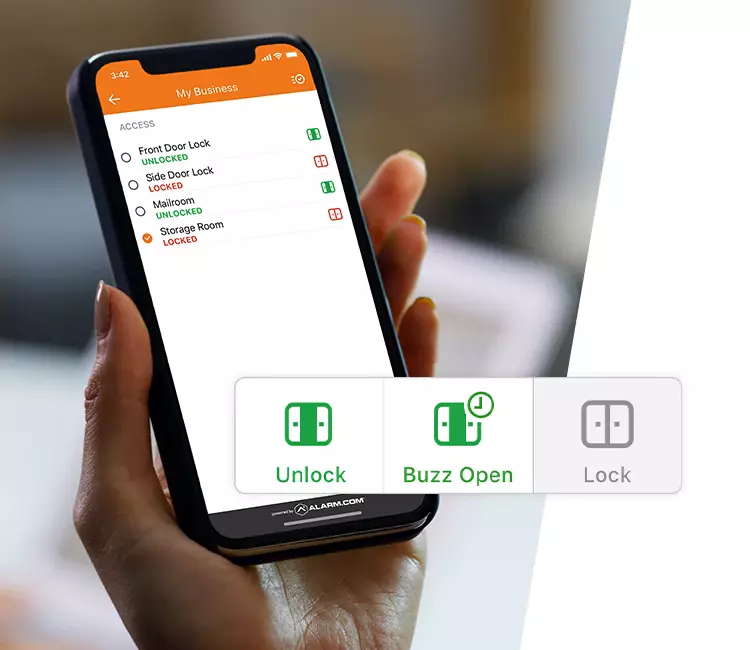- Understanding Rental Property Security
- Implementing Physical Security Measures
- Leveraging Technology for Enhanced Safety
- Establishing Clear Communication Protocols
- Insurance and Legal Protections
- Screening and Selecting Responsible Tenants
- Creating a Community Atmosphere
- Keeping Up with Security Trends and Updates
Understanding Rental Property Security

Header Background
Understanding rental property security is fundamental to protecting your investments and ensuring your tenants feel safe. Data from the U.S. Department of Justice highlights that rental properties are often perceived as more vulnerable targets for crime. As such, the responsibility is on property owners to proactively address security concerns.
A major aspect of rental property security involves identifying and mitigating potential risks. Understanding the specific risks associated with residential areas is crucial. The National Crime Prevention Council outlines that suburban areas are generally subject to different security challenges compared to urban settings. Therefore, owners must tailor their security efforts to their environment and local crime statistics.
Property owners should educate themselves about the legal obligations related to tenant safety. Landlord-tenant laws vary by region and may dictate the minimum security requirements that must be met. Compliance with these laws not only protects tenants but also minimizes legal risks for property owners.
Implementing Physical Security Measures
Implementing physical security measures is a fundamental aspect of safeguarding rental properties. Enhancing the security of a building can significantly increase the safety and comfort of its residents. One essential element in physical security is the installation of robust doors and locks.
Solid core doors are recommended for entry points as they provide greater resistance against forced entry compared to hollow core doors. In addition, employing deadbolt locks in combination with high-quality doorknob locks can provide an effective first line of defense. Ensuring that these locks are properly installed is crucial, as improper installation can compromise their efficacy.
Windows are another critical area to focus on. Adding locks and security bars to windows, especially those on the ground floor, can deter unauthorized access. Shatterproof glass or security film can also serve as an effective measure to prevent break-ins through windows.
Fencing and gating the property can enhance perimeter security. A sturdy fence with a gated entry can serve as a physical barrier, while also increasing the perception of safety among tenants. Gates can be enhanced with systems that require key cards or codes, restricting entry to authorized individuals only.
Lighting plays an essential role in security. Well-lit common areas, walkways, and parking lots can deter potential criminal activity. Motion-sensor lighting can further enhance security by alerting tenants to any unexpected movement during the night.
Security cameras, while also a technological element, can serve as a physical deterrent when visibly installed. Placement in strategic locations such as entrances, exits, and parking areas can help in monitoring activity and deterring potential vandalism or theft.
Lastly, maintaining landscaping is an underrated but important security measure. Keeping shrubs and trees well-trimmed around entry points can eliminate hiding spots for potential intruders and improve sightlines across the property.
By implementing these physical security measures, landlords can help ensure a safer environment for their tenants, while also potentially increasing the value and appeal of their rental properties.
Leveraging Technology for Enhanced Safety
In today’s digital age, technology plays a vital role in enhancing the safety and security of rental properties. By leveraging advanced security systems, landlords and property managers can ensure both the protection of their assets and the peace of mind of their tenants.
True Protection, the leading security system provider in Texas, offers customized security solutions tailored to a wide range of needs. With locations in Austin, San Antonio, Houston, Dallas/Fort Worth, and other areas, their team of local experts is well-equipped to assist property owners in finding the ideal security system for their specific requirements.
Installing a modern security system like the ones offered by True Protection can significantly deter potential intrusions. These systems are engineered to be comprehensive and user-friendly, ensuring that both property managers and tenants can operate them with ease. True Protection’s solutions include state-of-the-art surveillance systems that offer clear and reliable monitoring, helping to identify any suspicious activity promptly.
For landlords looking to provide enhanced security, the integration of smart technology is a key factor. True Protection offers cutting-edge home automation capabilities, which allow for seamless control of security measures remotely. This includes features such as automated lighting, advanced lock systems, and real-time video monitoring, which can be accessed via a smartphone or computer, providing instant updates regardless of the landlord’s location.
- Customized security solutions
- State-of-the-art surveillance systems
- Smart home automation capabilities
Moreover, True Protection’s award-winning systems offer great deals on the latest technology, ensuring that property owners receive both quality and value. By opting for a professional and locally-based service like True Protection, landlords can not only enhance property security but also foster a sense of safety among renters, ultimately contributing to tenant retention and satisfaction.
Establishing Clear Communication Protocols

Small Business Security Systems
Establishing clear communication protocols is crucial in ensuring both the safety of rental properties and the peace of mind of tenants. Effective communication between landlords and tenants can significantly enhance the security framework of rental properties.
Firstly, landlords should ensure that tenants have access to multiple communication channels. This could include predefined contact points such as phone numbers, email addresses, and emergency contact details. Providing tenants with a reliable way to reach the property manager or other support staff can expedite resolving security issues.
It is also beneficial to establish regular communication schedules. This might involve monthly newsletters, updates via email, or informational meetings to discuss any security changes or requirements. Regular updates can keep tenants informed about potential security issues, local crime statistics, or upcoming maintenance that could impact their safety.
Landlords should prioritize transparency by setting clear expectations regarding how and when tenants can report security issues or concerns. Providing a structured process for reporting can help ensure that problems are addressed promptly and effectively.
- Provide a tenant handbook with detailed security protocols.
- Include emergency procedures and contact information in the lease agreement.
- Inform tenants of any security upgrades or changes in protocols.
Additionally, implementing periodic feedback mechanisms can improve the communication process. Surveys or suggestion boxes can be useful tools for tenants to voice concerns or propose improvements without feeling uncomfortable.
In an integrated approach, landlords might consider utilizing technology to facilitate communication. Mobile applications or online platforms can serve as portals for tenants to report issues, request assistance, or receive real-time alerts and updates concerning their property.
Overall, a well-structured communication protocol not only enhances the security of rental properties but also contributes to creating a trustful and collaborative atmosphere between landlords and tenants, ultimately making renters feel safer and more secure.
Insurance and Legal Protections
Ensuring that your rental properties are covered by adequate insurance and legal protections is a crucial aspect of safeguarding both the properties and your investment. Proper insurance coverage can mitigate the financial risks associated with potential damages or liabilities.
Insurance policies should be carefully selected to cover a wide range of scenarios, including property damage, liability claims, and loss of rental income. Landlord insurance is designed specifically to protect rental property owners from risks involving tenancy. This typically provides coverage for the building, landlords’ personal property used on-site, and liability protection if someone is injured in the vicinity of the rental property.
Another critical component is liability insurance, which protects landlords in case tenants or third parties claim injury due to negligence. This type of insurance is crucial because legal claims can lead to substantial financial consequences. By having robust liability coverage, landlords can avoid major financial losses associated with legal disputes.
Legal protections also play a pivotal role in safeguarding rental properties. A well-drafted lease agreement is one of the landlord’s most effective tools. It should clearly outline the responsibilities of both parties and include terms related to property maintenance, rent payment schedules, rules for use of the property, and grounds for termination of the lease. This can help prevent misunderstandings and provide a legal framework if disputes arise.
It is essential to remain abreast of local and state regulations regarding landlord-tenant laws, as these can vary significantly depending on the location. Compliance with regulations such as the Fair Housing Act also prevents potential legal issues and fines.
Finally, engaging with legal or insurance professionals is advisable to ensure all bases are covered. They can provide tailored advice based on your specific circumstances and ensure that both legal documents and insurance policies are comprehensive and suited to your needs.
Screening and Selecting Responsible Tenants

True Home Security Systems
Screening and selecting responsible tenants is a critical step in ensuring the safety and security of rental properties. A thorough screening process helps identify individuals who are likely to respect the property and their neighbors, thereby reducing potential safety risks.
One of the primary methods for screening tenants is conducting background checks. This typically includes a review of the applicant’s criminal history. According to the Fair Housing Act, landlords must ensure that their screening practices do not discriminate based on race, color, national origin, religion, sex, familial status, or disability. However, landlords can legally consider certain criminal convictions if they pose a risk to property or other tenants.
In addition to criminal background checks, credit checks are also essential. A credit report can provide insight into a potential tenant’s financial responsibility and reliability in paying rent on time. Consistent late payments or significant amounts of debt may indicate future payment issues.
Another important aspect is verifying the rental history of applicants. Contacting previous landlords can provide valuable information on how a tenant has treated past rental properties and whether they have been timely with rent payments. This can also give insights into any possible behavioral issues or disputes with neighbors.
Lastly, consider conducting employment verification to ensure that the prospective tenant has a reliable source of income. Asking for recent pay stubs or employer contact information helps confirm the applicant’s ability to meet the financial obligations of a lease.
Implementing these tenant screening procedures is crucial for safeguarding rental properties. By taking a comprehensive and non-discriminatory approach, landlords can enhance the security and overall safety of their property and create a secure environment for all renters.
Creating a Community Atmosphere
Creating a community atmosphere can significantly enhance the perceived safety and satisfaction of renters within a property. Encouraging interactions and fostering a sense of belonging among tenants can lead to a more secure and cohesive living environment.
One effective approach is to organize regular community events. These events can range from casual meet-and-greets to more structured activities such as workshops or seasonal celebrations. Events provide opportunities for tenants to connect, build relationships, and engage with one another, which can help deter crime and create a collaborative atmosphere.
Establishing common spaces within the rental property where tenants can gather is also important. Common areas such as lounges, gardens, or rooftop spaces can serve as venues for these interactions. Properly designed and maintained shared spaces can play a significant role in promoting a sense of community.
Another method is to facilitate communication through digital means. A community bulletin board or a dedicated online platform can enable residents to share information, post announcements, and discuss community matters. This ensures that tenants feel informed and involved in their living environment.
Encouraging feedback and suggestions from tenants can also contribute to creating a positive atmosphere. Providing a mechanism for residents to express their concerns or suggest improvements shows that management is listening and responsive. This can increase trust and contribute to a more harmonious community.
Furthermore, collaborating with local law enforcement or neighborhood watch programs to organize safety workshops or informational sessions can empower residents with knowledge and skills to keep themselves safe. This partnership can enhance security awareness and foster a sense of community vigilance.
Ultimately, creating a community atmosphere involves a combination of physical, social, and communicative strategies. By prioritizing tenant interaction and fostering a supportive environment, property managers can significantly enhance both the real and perceived safety of their rental properties.
Keeping Up with Security Trends and Updates
In an ever-evolving security landscape, staying updated with the latest trends is crucial for property owners aiming to protect their rental properties while ensuring tenants feel safe. With the rise in technological advancements, security measures and potential threats alike are continually changing. Therefore, it is essential for landlords to remain informed and adaptable.
Continuous education is a key component for keeping up with security trends. Landlords can attend workshops, subscribe to industry publications, and engage with online forums to gain insight into new security technologies and practices. This proactive approach to education can help landlords implement up-to-date security measures, ensuring the safety of their properties and tenants.
Technological advancements in security systems are prevalent and offer numerous benefits. Smart locks, surveillance cameras, and alarm systems are increasingly sophisticated, providing enhanced security features. Cloud-based solutions allow real-time monitoring and control, offering peace of mind to both property owners and tenants. This technology can also integrate with other smart home features to create a cohesive, modern security infrastructure.
Table 1 below outlines some emerging trends in rental property security technology:
| Trend | Benefit |
|---|---|
| Smart Locks | Allow remote access control and eliminate the need for physical keys. |
| AI-Powered Surveillance | Enhanced monitoring with capabilities like facial recognition and activity detection. |
Alongside technological enhancements, staying informed about legal regulations related to property security is essential. Privacy laws and landlord-tenant regulations can influence the implementation of security measures. Being aware of and compliant with these laws will not only protect property owners from legal issues but also build trust with tenants.
Finally, joining professional networks and groups can provide additional support and knowledge-sharing opportunities. Engaging with others in the property management field allows landlords to discuss challenges and solutions related to security, providing valuable insights and strategies that can be implemented in their own properties.
By actively keeping up with security trends and updates, landlords can ensure that their rental properties are secure and that their tenants feel safe and valued.
